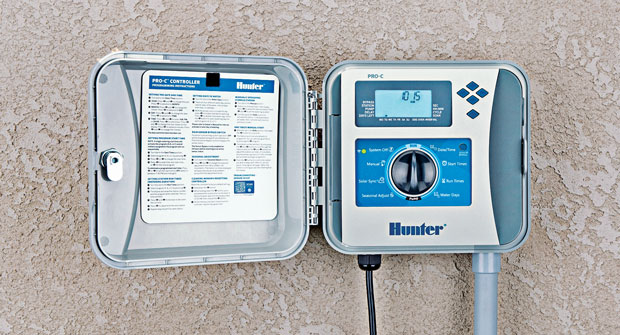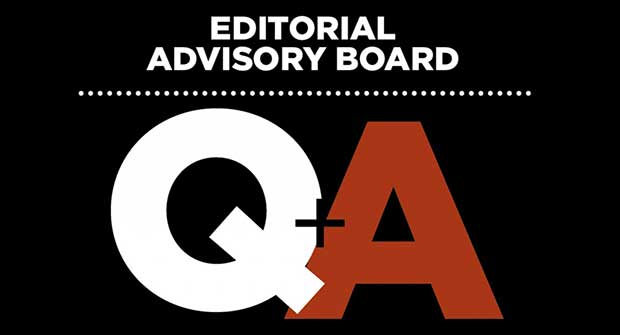As the brains of an irrigation system, the controller plays a crucial role in managing water resources by signaling to valves when and how much water to release. But beyond this primary function, there are more aspects of modern controllers that contractors may be overlooking.
Here are four irrigation controller considerations that can enhance your effectiveness as a water manager.
Program flexibility
With more frequent drought conditions and more significant government restrictions on available water resources, landscape and irrigation contractors are tasked with being better water stewards for their residential and commercial clients. Tapping into a controller’s ability to tailor a property’s irrigation functions is now critical, says Ben Sacks, category manager for residential and commercial irrigation electronics at Hunter Industries.
“In some of our busiest markets, like Texas and Florida, they’ll be restricted to one or two days of watering availability in a week in the middle of the summer,” Sacks says. “So, (contractors) are trying to optimize how much irrigation they can (complete) in those short water windows.”
As a result, the irrigation system must run more tasks at one time, requiring the controller to initiate some creative scheduling and programming, often in conjunction with real-time weather data.
“We like to be able to adjust the watering frequency or duration based on local conditions,” Sacks says. “So, you can apply more water when it’s hot or reduce run times when it’s cooler. Having the controller (acting) more proactive in the decisions that are made is definitely beneficial to improving watering efficiency.”
“Landscapers can customize each zone to be weather-based or use basic run time,” adds Bill Savelle, executive vice president of products at Weathermatic. “For example, I would assign turf to be weather-based, but annuals have special watering needs so I will use a custom program. This delivers water conservation and a great landscaping within the same system.”
Integrated flow sensors
Doug Closter, product manager of commercial controllers at Rain Bird, says contractors can optimize an irrigation system, especially larger setups, by adding flow sensors that allow the controller to better utilize run times and manage multiple zones simultaneously.
“You can optimize your system based on the amount of flow each zone uses,” Closter says. “It’ll measure each zone and then run the ones that fit within the system’s available flow.”
An added benefit is that the sensor will tell the controller to shut down in the event of a catastrophic leak or system failure based on high or unexpected flow rates.
“It’s an essential safeguard against accidental water waste,” Closter says.
Adaptability
With greater functional demand comes greater complexity. As a result, irrigation manufacturers are engineering modern controllers to be highly adaptable and adopt technological upgrades that will improve their functionality.
“The modernization of irrigation controllers has had a forward and backward compatibility focus in order to maintain it for 10 to 15 years without having to replace the entire device,” Sacks says. “Many manufacturers, including Hunter, offer modular controllers that can be serviced piece by piece and have plug-and-play options to expand the system’s capabilities or retrofit and update (controller) systems.”
To further increase adaptability and options for contractors, Sacks says modern controllers can receive hardware, software and firmware updates via internet cloud connectivity to offer continual improvements without needing to replace the controller hardware.
“You don’t have to be on-site all the time. You can integrate weather data and manage multiple sites very easily and quickly. When we’re talking ways controllers can better optimize systems, connectivity is definitely the future,” he adds.
Cycle and soak
Another underutilized asset to maximize an irrigation system’s efficiency is the controller’s cycle-and-soak feature.
“Run/soak allows you to match the application of the sprinkler head to the intake rate of the soil. It prevents runoff and results in water savings,” says Savelle.
Depending on the soil type in a particular area, the ground can only absorb so much water before it begins to pool and run off onto the surrounding pavement. The cycle-and-soak feature rectifies this by turning the irrigation system on and off to allow for water to absorb into the soil thoroughly before starting up again and completing the cycle.
“Let’s say you want to have a 20-minute runtime, but at around minute 12, you begin to see runoff,” Closter explains. “You can still get that 20-minute runtime, but you’re going to cycle this into two runtime sessions.”


